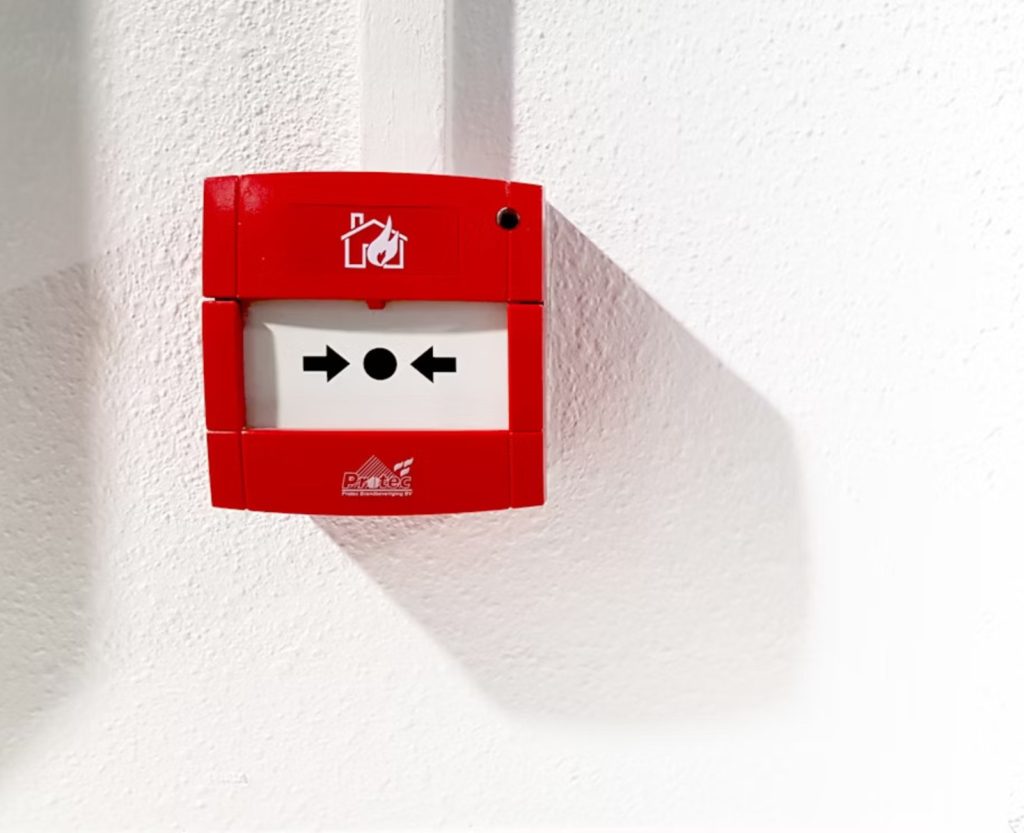3D in data visualization is nothing different from the 3D we have seen in movies, interior design, and product presentations. However, does 3D data visualization actually outweigh 1D and 2D visualization? And how can data analyst utilize the most out of 3D data visualization?
This article would answer all of these questions.
What is 3D data visualization?
Data visualization is translating numbers, metrics, and information into a visual context, such as graphs or maps, to make it easier to comprehend and faster to analyze insights.
3D Data Visualization is the act of using three-dimensional charts, instead of the normal one or two, to generate and visualize the existing dataset. This helps create both qualitative and quantitative information about the object. At the same time, it provides the perception of height, depth, and breadth.
With advanced technology, 3D data visualization can combine with interactive features, making the visualization more tangible and easier to perceive.
- Learn more about What Is Data Visualization And Why Is It Important?
The benefits of 3D data visualization
You might see 3D Visualization everywhere, from the movies you watch, a presentation of your new house designed by an architect, to the displayed products on the E-commerce platform. These industries are getting the most out of 3D visualization. So, what about applying 3D visualization into Data Analytics? What makes 3D data visualization different from the basics?
Firstly, it represents all angles of a data graph. From that, the data analyst or decision-maker can see multiple data points and micro-clusters, which can be limited to one or two-dimensions visualizations. This gives you a deeper understanding of your data analytics and simplifies the process of identifying patterns.
Secondly, some 3D data visualization applications allow users to change the scale, draw, tilt or move the visualization. This enables users to understand the complexity of data by seeing the object from the x,y, and z-axis. Combining 3D visuals with predictive analytics, users can even perform visualization throughout the impacted time, see how the data changes, and make instant decisions if necessary.
Yet, it still has certain challenges
There are many types of graphs. However, 3D data visualization is not for all of them. The truth is that many 3D visualizations make it harder to present data to an audience. Instead of creating the most insightful and engaging piece of graphs, you end up with a wrench in the works. Thus, 3D charts are generally high risk, even though they will be highly effective if used properly. Most of the time, bar or pie charts are not the most compatible with three – dimensions data visualization.
3D Data visualization: 3 Don’ts & 2 Dos
As stated above, you now clearly acknowledge that 3D data visualization does not always work. Let’s break down several scenarios to decide when to use and when not to use it.
Don’t: Use 3D data visualization not to show anything

At first glance, this graph seems appealing and can simultaneously generate multiple datasets for comparison. However, in reality, you can’t get any insights or patterns from the data.
The foreground – bars obscure those in the background. The further the charts are, the harder they are to determine their values. Also, 3D dimensions create two horizontal lines on the top of each bar. Thus, it takes more time to judge the accurate height of it. The purpose of data visualization is to make it easier to read, but the 3D in this example has a countereffect, making the data more complex.

Here’s another 3D Barplots Data Visualization. Still, the green bars in the back are hidden, and you can’t tell what’s happening with the trends here. Simply put, when using horizontal or vertical bar graphs, it’s best to stick with two-dimensional data visualization.
Don’t: 3D pie charts is the best option

Pie Charts are usually made for quick comparison. Thus, they are primarily suitable with two to four components within one chart. The 3D Pie Chart above is unnecessary. It creates a small bowl-like part under the surface and draws a graphical perspective that makes the back part smaller than the front. Without the percentage numbers, we can’t compare the portions accurately.
Don’t: Ignore the perspective and viewpoint

In the physical world, objects further away appear smaller than their actual size. Graphic perspective stimulates this effect, which can cause havoc in presenting data values. Therefore, it’s best to avoid graphical perspective in visualizations. Instead, consider using orthographic projection, which means using three-dimensional objects in two-dimension.
Another thing to remember is the viewpoint, where chart readers position their eyes relative to the charts. This is an example of a 3D data visualization that lacks both mentioned criteria:
The impact of disregarding viewpoint and perspective also makes it committed to the first don’t: make a chart not to show anything. It has a complex visual, and the viewpoint blocks most information from being read. Also, the perspective makes it hard to analyze the data since the back has been resized.
Do: Leverage 3D map or 3D surface

If you have grid coordinates with different variables for each position or if your data has a 3D dimension with too many data series and categories, it is best to present it with 3D visualization. Some reasons why this method, or the above example, works:
- Comparison between each data series is easier when displayed at the same time on an actual map. It reduces the demand for working memory and analyzing skills to compensate for the complexity of the data. If the above data used bar graphs to visualize, you had to remember each area’s name and numbers, then arrange and compare one another.
- The 70-degree viewpoint allows viewers to fully view the information while digesting the data.
Another example of 3D surface data visualization:

The above map shows that data can vary between the x,y, and z axes. If you use bar or pie plots to display the data, it can take up multiple charts to fully describe the density and transformation of the data. Using a 3D data visualization with different colors to highlight each area helps analysts read the data faster and more accurately, right at first glance.
Do: Integrate 3D data visualization with interactive features
Three – dimensions data visualization will perform its best with interactive features. By allowing users to change the plot’s orientation, data analysts can efficiently explore the data structure, identify patterns more accurately and develop the most tangible insights. This type of data visualization works the best with surface plots and scatterplots.
You can experience interactive 3D data visualization and learn how to make one here.
List Of 3D data visualization tools: Both free & Paid
Free tools such as Excel or PowerPoint do provide 3D data visuals. Yet, these tools offer limited 3D visuals and are usually hard to optimize to make the best suit for your data. Also, they do not have interactive capabilities. Here are some of the best cloud and on-premises interactive three – dimensions data visualization tools.
1. FusionCharts
FusionCharts is a JavaScript charting library. They offer a plethora of graphs, including 3D visualization and more than 1000 maps for all types of devices, with integration ability with React, Angular, Vue, jQuery, Java, .NET, or PHP.
Some of FusionChart’s key features:
- More than 95 charts, 1000 maps, and 20 dashboards for all business use-cases
- Provide source code for all charts and dashboards
- A diversity of 3D data visuals such as 3D columns, pies, bars, stacked bars, funnel, map, and 3D pyramid.
- Direct support from the tech team, quick integration process.
Pricing: Starting from $497. Suitable for data analytics services companies or enterprises’ data teams that constantly need data visualization.
2. Plotly

Plotly allows you to create, modify and share a broad range of data visualization, including 3D, without coding or data science skills. It also provides a simple tool that suits any business and user by removing the complexity of creating and analyzing data.
Some of Plotly’s key features:
- An open library of 3D charts
- Make D3 and WebGLcharts without coding, simply by uploading a CSV file or connecting to a SQL database through Falcon.
- Create online Dashboards for easy access
- Allow building analytics web apps with a python framework
- Transform your MATLAB, matplotlib, or ggplot2 charts with interactive features from Plotly.
Pricing: Plotly offers 2 packages: Cloud and On-premises. With the Cloud version, it’s suitable for freelancers, students, a small team of data analysts, and SMEs. They even provide a community-free version, but of course, with limited features and graphs. With on-premises, it’s the best option for large enterprises.
3. Vaa3D
Vaa3D, or “3D visualization assisted analytics” software, is a famous on-premises tool for enterprises across the globe. Available on Mac, Linux, and Windows, Vaa3D provides 3D, 4D, and even 5D data visualization for bioimages and surface objects.
Some of Vaa3D’s key features:
- A plethora of 3D applications: 3D color image stacks, 3D irregular-shaped surfaces, 3D landmarks, 3D neuron structures, 3D point clouds, and 5D time series of color image stacks.
- 3D real-time interactive visualization
- Analysis functions include data management, statistics, blending, 3D colocalization, brain connectome mapping, and landmarking.
Pricing: They do offer free download and an open library.
4. SynGlyphX
Intending to transform data into a visualized and interactive environment, SynGlyphX focuses only on 3D data visualization. They have worked with multiple industries and businesses, including healthcare, sports, retail, education, and even the government.
Some of SynGlyphX’s key features:
- Easy to use for both entry-level data analysts to experts
- Provide 4 different models for different user-intents
- Provide data aggregation, data processing, and data analytics services
Pricing: 30$ to 300$
5. GenView 3D
This solution is the modern tool for decision-makers, data analysts, and marketing teams to control, generate insights and analyze information.
Some of GenView 3D key features:
- 3-dimensional interface
- User-friendly and easy-to-use interface for non-tech positions
- Support data management
- Provide real-time data analytics
6. Chart 3D
Another 3D data visualization tool that needs no coding. To use Chart 3D, users need to import their CSV or XLSX datasets. Then Chart 3D will generate an interactive 3D or 2D visualization.
Some of Chart 3D’s key features:
- Have 3D Scatter, Bar, or Geospatial plot
- Easily export and share visualization
- Allows viewing from multiple perspectives
- Perfect for the non-tech person.
7. Three.js
Three.js is a 3D data visualization tool that doesn’t require much coding; however, a bit of tech and data background is necessary when using this software. Some of the Three.js’s key features:
- SVG renders
- Access to WebGL
- Capabilities to create interactive 3D data visuals
- Do not require plugins
Creating 3D Data Visualization from scratch might be a daunting start, so it would be better to seek advices from data scientists and data analysis before execution.
Synodus provides Data Visualization services, including advisory, implementation, support, migration, BI reporting components, and managed services to help businesses benefit from a the most tangible insights.
Wrapping up
Using 3D data visualization offers both advantages and downsides. Before adopting one for your data analytics and management, consider its adaptability to your data sets, resources, and readability to your audience.
Another viable option is to work with data experts to determine what 3D visuals will work best with your dataset. Then, create a data analytics platform that best suits your current and future needs.
How useful was this post?
Click on a star to rate it!
Average rating / 5. Vote count:
No votes so far! Be the first to rate this post.




